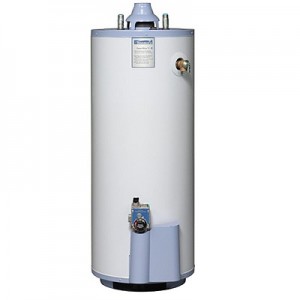
If you have an older water heater, it may not always be as hot as you’d like, and at other times may be scalding. If you are like most people, you probably just assume the water heater is shot, and it’s time for a new one. The good news is that this is not always the case. The bad news is you will have to assume a certain level of risk to correct the problem. There are two things that can contribute to the temperature and amount of hot water you have, and they both show different symptoms.
If you have hot water, but it only lasts for a few minutes, the problem is with your dip tube. As the cold water comes in, it travels down a tube to the bottom of the heater. This way, the cold incoming water goes straight to the burner, and the hot water comes off the top. Sometimes the dip tube will completely disintegrate, and this will cause the incoming cold water to stay at the top, and go right back out of the hot water outlet. While the tank is full of hot water, none (or not much) of it is being used because of the incoming cold water mixing with it right away.
The other problem that you may have is a fluctuation of hot water temperatures. The water will usually be much cooler after long periods of non-use. This is due to a heavily mineral and scale coated thermostat probe. On the gas valve of the water heater is a probe that protrudes into the tank. This probe is what senses the temperature changes and when the water cools down far enough; it will activate the gas valve to kick on. When this probe gets a heavy coating of mineral and scale buildup on it, it does not detect the temperature changes as quickly and accurately. When the water heater is sitting idle, the water slowly cools but the probe does not detect this soon enough and usually the first shower of the morning is lukewarm. The same can be true after being away from the house all day. When the hot water is turned on, cold water is sent straight to the bottom, and is enough to trigger the probe to call for heat. This is why the first shower is never good, but the problem is corrected with the second shower. That is only the annoying half of this problem.
Once the tank calls for heat, the probe does not pick up the heat increase fast enough and the water can become excessively hot and scalding. Sometimes the T&P valve will open and dispense some water to prevent excessive pressure in the tank. If you are experiencing fluctuating water temps, do not turn the water heater up higher. This will only compound the problem and make it more dangerous. You should call a licensed plumber. The fix for this would be to change the gas valve. The problem is, depending on the age of your water heater, you would be taking a risk as to how much life is left on the tank. It would be unfortunate if you paid to have the gas valve replaced and the tank failed shortly after. If the tank is old enough, it may be worthwhile to just replace the whole thing. Since you know it is going to go at some point, you might as well do it before it floods your home.
